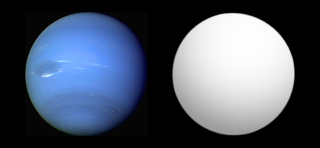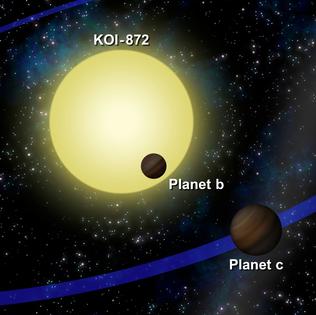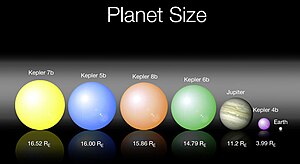HD 188015 is a yellow-hued star with an exoplanetary companion in the northern constellation of Vulpecula. It has an apparent visual magnitude of 8.24, making it an 8th magnitude star, and thus is too faint to be readily visible to the naked eye. The distance to this star can be estimated through parallax measurements, which yield a separation of 165.5 light years from the Sun.

Any planet is an extremely faint light source compared to its parent star. For example, a star like the Sun is about a billion times as bright as the reflected light from any of the planets orbiting it. In addition to the intrinsic difficulty of detecting such a faint light source, the light from the parent star causes a glare that washes it out. For those reasons, very few of the exoplanets reported as of January 2024 have been observed directly, with even fewer being resolved from their host star.
The XO Project is an international team of amateur and professional astronomers tasked with identifying extrasolar planets. They are led by Peter R. McCullough of the Space Telescope Science Institute. It is primarily funded by NASA's Origins Program and the Director's Discretionary Fund of the Space Telescope Science Institute.

Kepler-7b is one of the first five exoplanets to be confirmed by NASA's Kepler spacecraft, and was confirmed in the first 33.5 days of Kepler's science operations. It orbits a star slightly hotter and significantly larger than the Sun that is expected to soon reach the end of the main sequence. Kepler-7b is a hot Jupiter that is about half the mass of Jupiter, but is nearly 1.5 times its size; at the time of its discovery, Kepler-7b was the second most diffuse planet known, surpassed only by WASP-17b. It orbits its host star every five days at a distance of approximately 0,06 AU. Kepler-7b was announced at a meeting of the American Astronomical Society on January 4, 2010. It is the first extrasolar planet to have a crude map of cloud coverage.

Kepler-4b, initially known as KOI 7.01, is an extrasolar planet first detected as a transit by the Kepler spacecraft. Its radius and mass are similar to that of Neptune; however, due to its proximity to its host star, it is substantially hotter than any planet in the Solar System. The planet's discovery was announced on January 4, 2010, in Washington, D.C., along with four other planets that were initially detected by the Kepler spacecraft and subsequently confirmed by telescopes at the W.M. Keck Observatory.

Kepler-5b is one of the first five planets discovered by NASA's Kepler spacecraft. It is a hot Jupiter that orbits a subgiant star that is more massive, larger, and more diffuse than the Sun is. Kepler-5 was first flagged as the location of a possibly transiting planet, and was reclassified as a Kepler Object of Interest until follow-up observations confirmed the planet's existence and many of its characteristics. The planet's discovery was announced at a meeting of the American Astronomical Society on January 4, 2010. The planet has approximately twice the mass of Jupiter, and is about 1.5 times larger. It is also fifteen times hotter than Jupiter. Kepler-5b orbits Kepler-5 every 3.5 days at a distance of approximately 0.051 AU.

Kepler-6b is an extrasolar planet in the orbit of the unusually metal-rich Kepler-6, a star in the field of view of the NASA-operated Kepler spacecraft, which searches for planets that cross directly in front of, or transit, their host stars. It was the third planet to be discovered by Kepler. Kepler-6 orbits its host star every three days from a distance of .046 AU. Its proximity to Kepler-6 inflated the planet, about two-thirds the mass of Jupiter, to slightly larger than Jupiter's size and greatly heated its atmosphere.

Kepler-8b is the fifth of the first five exoplanets discovered by NASA's Kepler spacecraft, which aims to discover planets in a region of the sky between the constellations Lyra and Cygnus that transit their host stars. The planet is the hottest of the five. Kepler-8b was the only planet discovered in Kepler-8's orbit, and is larger than Jupiter. It orbits its host star every 3.5 days. The planet also demonstrates the Rossiter–McLaughlin effect, where the planet's orbit affects the redshifting of the spectrum of the host star. Kepler-8b was announced to the public on January 4, 2010 at a conference in Washington, D.C. after radial velocity measurements conducted at the W.M. Keck Observatory confirmed its detection by Kepler.
Kepler-4 is a sunlike star located about 1626 light-years away in the constellation Draco. It is in the field of view of the Kepler Mission, a NASA operation purposed with finding Earth-like planets. Kepler-4b, a Neptune-sized planet that orbits extremely close to its star, was discovered in its orbit and made public by the Kepler team on January 4, 2010. Kepler-4b was the first discovery by the Kepler satellite, and its confirmation helped to demonstrate the spacecraft's effectiveness.

Kepler-6 is a G-type star situated in the constellation Cygnus. The star lies within the field of view of the Kepler Mission, which discovered it as part of a NASA-led mission to discover Earth-like planets. The star, which is slightly larger, more metal-rich, slightly cooler, and more massive than the Sun, is orbited by at least one extrasolar planet, a Jupiter-sized planet named Kepler-6b that orbits closely to its star.

Kepler-7 is a star located in the constellation Lyra in the field of view of the Kepler Mission, a NASA operation in search of Earth-like planets. It is home to the fourth of the first five planets that Kepler discovered; this planet, a Jupiter-size gas giant named Kepler-7b, is as light as styrofoam. The star itself is more massive than the Sun, and is nearly twice the Sun's radius. It is also slightly metal-rich, a major factor in the formation of planetary systems. Kepler-7's planet was presented on January 4, 2010 at a meeting of the American Astronomical Society.
Kepler-8 is a star located in the constellation Lyra in the field of view of the Kepler Mission, a NASA-led operation tasked with discovering terrestrial planets. The star, which is slightly hotter, larger, and more massive than the Sun, has one gas giant in its orbit, Kepler-8b. This gas giant is larger than Jupiter, but is less massive, and thus more diffuse. The planet's discovery was announced to the public on January 4, 2010 along with four other planets. As the fifth confirmed planetary system verified by Kepler, it helped demonstrate the capabilities of the Kepler spacecraft.
HIP 79431 is a red dwarf star with a planetary companion in the constellation Scorpius. It has the proper name Sharjah, as selected in the NameExoWorlds campaign by United Arab Emirates, during the 100th anniversary of the IAU. Sharjah is the cultural capital of United Arab Emirates. The star has an apparent visual magnitude of 11.34, which is far too faint to be visible to the naked eye. Based on parallax measurements, this system is located at a distance of 47.4 light-years from the Sun. It is drifting closer with a radial velocity of −5 km/s.

An exoplanet is a planet located outside the Solar System. The first evidence of an exoplanet was noted as early as 1917, but was not recognized as such until 2016; no planet discovery has yet come from that evidence. What turned out to be the first detection of an exoplanet was published among a list of possible candidates in 1988, though not confirmed until 2003. The first confirmed detection came in 1992, with the discovery of terrestrial-mass planets orbiting the pulsar PSR B1257+12. The first confirmation of an exoplanet orbiting a main-sequence star was made in 1995, when a giant planet was found in a four-day orbit around the nearby star 51 Pegasi. Some exoplanets have been imaged directly by telescopes, but the vast majority have been detected through indirect methods, such as the transit method and the radial-velocity method. As of 1 March 2024, there are 5,640 confirmed exoplanets in 4,155 planetary systems, with 895 systems having more than one planet. This is a list of the most notable discoveries.

Kepler-10, formerly known as KOI-72, is a Sun-like star in the constellation of Draco that lies 607 light-years from Earth. Kepler-10 was targeted by NASA's Kepler spacecraft, as it was seen as the first star identified by the Kepler mission that could be a possible host to a small, transiting exoplanet. The star is slightly less massive, slightly larger, and slightly cooler than the Sun; at an estimated 11.9 billion years in age, Kepler-10 is 2.3 times the age of the Sun.
Kepler-14b is an extrasolar planet in orbit around the primary star of the binary Kepler-14 system. It is currently the only planet known to exist in this star system. Kepler-14b is 8.4 times the mass of Jupiter and has a radius 1.14 times that of Jupiter, and it orbits its host star every 6.79 days. It was discovered by NASA-led Kepler mission, which noted the planet as a planetary candidate as early as March 2009, around the same time as the discovery of the first five planets discovered by Kepler. However, the team was unable to confirm the planet until extensive follow-up observations, as high-resolution imaging resolved the star Kepler-14 as a closely orbiting binary system. The Kepler team would have not noticed that Kepler-14 was a binary star based solely on initial radial velocity measurements, and found that if they had not realized this, their data on Kepler-14b would have been very inaccurate.
Kepler-20 is a star about 934 light-years from Earth in the constellation Lyra with a system of at least five, and possibly six, known planets. The apparent magnitude of this star is 12.51, so it cannot be seen with the unaided eye. Viewing it requires a telescope with an aperture of 15 cm (6 in) or more. It is slightly smaller than the Sun, with 94% of the Sun's radius and about 91% of the Sun's mass. The effective temperature of the photosphere is slightly cooler than that of the Sun at 5466 K, giving it the characteristic yellow hue of a stellar class G8 star. The abundance of elements other than hydrogen or helium, what astronomers term the metallicity, is approximately the same as in the Sun. It may be older than the Sun, although the margin of error here is relatively large.

Kepler-46, previously designated KOI-872, is a star located in the constellation Lyra. Observed since 2009 by the Kepler space observatory, it has since been found to possess a planetary system consisting of at least three planets and while it has a similar mass to the Sun (90%) it is significantly older at ten billion years.
Kepler-102 is a star 353 light-years away in the constellation of Lyra. Kepler-102 is less luminous than the Sun. The star system does not contain any observable amount of dust. Kepler-102 is suspected to be orbited by a binary consisting of two red dwarf stars, at projected separations of 591 and 627 AU.
Kepler-13 or KOI-13 is a stellar triple star system consisting of Kepler-13A, around which an orbiting hot Jupiter exoplanet was discovered with the Kepler spacecraft in 2011, and Kepler-13B a common proper motion companion star which has an additional star orbiting it.











